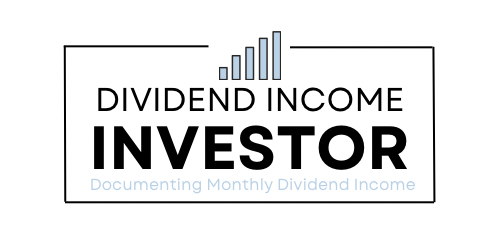Dividend payout ratio (DPR) is not the first thing that an investor will look for when selecting a stock.
However, DPR is not to be overlooked, as it is an important aspect of dividend investing.
It’s very important that dividend investors understand it during the Coronavirus pandemic.
Related post: Coronavirus: Future Predictions on how it will change the world forever.
Let’s discuss what dividend payout ratios are and why they are so important for dividend investors.
What is a Dividend Payout Ratio?
The dividend payout ratio (DPR) is the total amount of dividends paid out to the shareholder relative to the company’s net income. The DPR shows the percentage of earnings paid out in dividends.
The amount of income that is not paid out to shareholders in dividends is retained and used towards share buybacks, reinvesting in the business, debt management, and for operations.
In essence, the dividend payout ratio is an indicator of how much of the net income is being paid out in the form of dividends.
Why is Dividend Payout Ratio Important? Hint: Dividend Sustainability
Most dividend investors can handle a market correction without even flinching. We simply do not get phased by market fluctuations since dividend investors are long term investors.
But what does scare dividend investors is the possibility of dividend cuts, because that impacts our revenue.
Related post: Dividend Stock Income Update for March 2020 – New Record + 52% YoY Growth
In short, a company with a healthy dividend payout ratio is far less likely to experience a dividend cut because they have the cash flow to make the payments to shareholders.
On the other hand, a company with a high payout ratio may be forced to cut their dividend if the economy worsens.
What does the DPR tell us about a company?
If a company is not paying out a portion of their earnings in the form of stock buybacks or dividends, they are likely a growth company that is reinvesting most of their earnings.
So, the dividend payout ratio can tell us important information pertaining to a company’s maturity.
For example, a growth company like Tesla will not pay out a dividend because they are growing the business as fast as possible. They put the majority of earnings back into the business rather than pay out earnings to shareholders. They do this because the money is better in their hands than it is in the shareholders—reinvesting the earnings will grow the company faster.
Alternatively, a company such as Apple Inc. has reached a more mature stage. In turn, they have more cash flow to reinvest earnings and still pay out a dividend.
“Behind every stock is a company. Find out what it’s doing.” – Peter Lynch
How to Calculate the DPR
The formula to calculate the dividend payout ratio is very simple. However, it isn’t entirely necessary to know how to calculate the ratio, because many sites like morningstar.ca will calculate it for you.
Nevertheless, the formula to calculate the dividend payout ratio is as follows:
Dividend Payout Ratio = Dividends paid/net income
On a per share basis, the calculation works out as follows:
Retention Ratio = Dividends per share/EPS
* EPS = Earnings per share
What is an Ideal Dividend Payout Ratio?
According to dividend.com, an ideal dividend payout ratio is between 0 to 35%.
Companies within this range are considered healthy, since they have more than enough cash flow to cover and raise their dividend payments.
A good example of a healthy company within this range is Apple inc. According to morningstar.ca, Apple’s payout ratio currently sits at 24.38%.
On the other hand, high payout ratios are 55% or greater. Although a 55% payout ratio is nothing to be alarmed about, as many established businesses maintain a dividend payment in this range. However, a payout ratio of 55% or greater can be sign that the dividend payment may be in jeopardy. After all, a company with a ratio this high is paying out more than half its earnings. What happens if a depression comes along and earnings drop? The company may not be able to maintain its dividend, which is the worst nightmare for dividend investors.
An Example of a High Dividend Payout Ratio Stock
Simply put, high dividend payout ratios are a sign of poor management.
When it comes to dividend payments in jeopardy, one company in particular stands out to me—Sir Royalty Income Fund (SRV.UN). They are a restaurant holding company that owns and operates a portfolio of restaurants in Canada.
They have been a stellar dividend stock in recent years. In fact, SRV.UN paid a yield over 8% for years. But they recently cut their dividend, as their dividend payment was surpassing their net income.
Since the dividend cut, they are still at a dividend payout ratio of over 85% according to Morningstar.
This is alarming considering that they are in the restaurant industry, which is mostly closed because of Covid-19.
Related post: The Silver Lining of Covid-19
They recently suspended their dividend and the stock lost more than 50% of its value.
This is the perfect example of why a high dividend payout ratio can be a bad thing.
Meanwhile, stocks with lower yields like Apple inc. can comfortably afford to continue paying their dividend.
Final Thoughts on Dividend Payout Ratios
At the end of the day, sustainable, healthy dividend payout ratios are superior to high payout ratios.
High payout ratios may be tempting in the short term. But dividend raises will be less consistent, and there is a greater chance of a dividend cut.
Therefore, it is best for long term dividend investors to choose only the best quality dividend stocks with the healthiest payout ratios.
Decades of sustainable dividend payments and dividend raises will lead to wealth. Low growth stocks with high payout ratios and poor management will not build wealth.
Sources: Dividend.com, Investopedia, Morningstar.ca.
I am not a licensed investment or tax adviser. All opinions are my own. This post contains advertisements by Google Adsense. This post also contains internal links, affiliate links, links to external sites, and links to RTC social media accounts.
Earn passive income through dividend investing with RTC’s link below ($50 in free trades):

Connect with RTC
Twitter: @Reversethecrush
Pinterest: @reversethecrushblog
Instagram: @reversethecrush_
Facebook: @reversethecrushblog
Email: graham@reversethecrush.com


 Dividend Stock Income Update for March 2020 – New Record + 52% YoY Growth
Dividend Stock Income Update for March 2020 – New Record + 52% YoY Growth
